Cat Quest III is the third installment of the friendly action and adventure videogames set in a world filled with cat puns and pop culture parodies. This entry transports the series to the Purribean, an island chain filled with roguish pirates, buried treasure, and supernatural dangers. I play as the Seeker, the last in a line of special cats recognizable by the red star marked on the back of their head. The Seeker is predestined to find the North Star, an artifact whose holder is guided to “their every heart’s desire.” The Seeker and their companion, the cat spirit Captain Cappey, search for the artifact across the many islands of the Purribean, delving into caves and fortresses, following clues to hidden treasures, and hunting for Bounties on the way. They are pursued on this quest by the Pi-Rat King, a broken monster of a pirate whose wheezing body is kept alive by twisted machinery. Every feat the Seeker accomplishes brings them closer to the North Star and the fulfillment of the destiny with which they are marked.
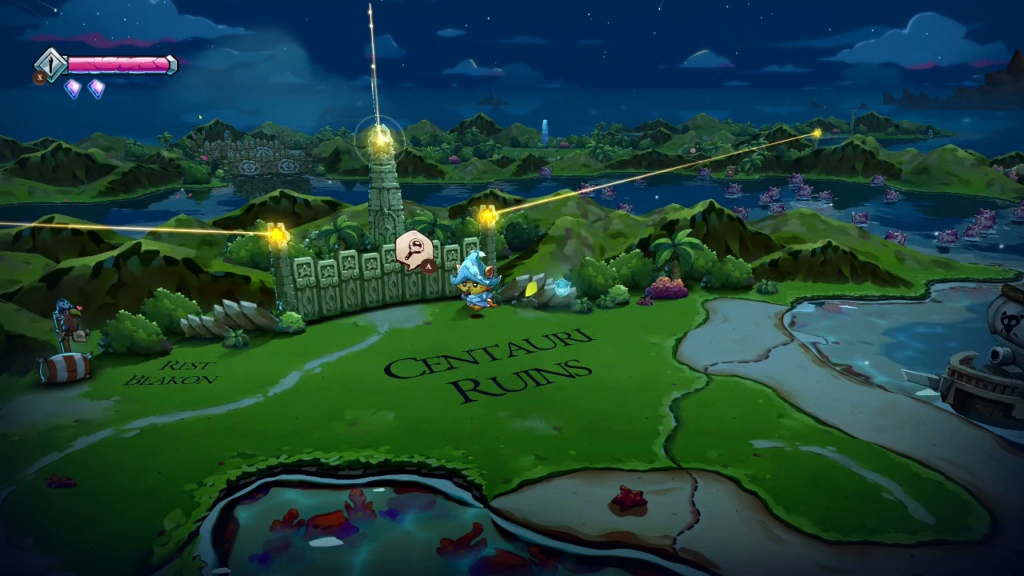
Cat Quest III continues the series tradition of simple presentation. Writers often refer to spaces within videogames as “maps,” but in Cat Quest it’s literally true. The entire world is portrayed as a bright and incredibly detailed map. When the Seeker passes by towns, landmarks, and dungeons, their names are handwritten in script on the ground beside them. The boundaries between regions are marked by dotted lines. This aesthetic works especially well in Cat Quest III’s new theme as pirates and other sailors of myth so often busied themselves with maps scrawled on reams of browning parchment.
Combat complements the simplicity of the presentation. The Seeker may equip a variety of offensive tools to wield against the monsters and villainous pirates they encounter. Melee weapons like swords, claws, and shields are the Seeker’s workhorse tools, able to defeat most enemies in only a few hits. The Seeker must play defensively, as enemies are eager to counterattack and have only subtle changes in animation indicating they are about to respond with swings from their own weapons or a barrage of powerful magic.
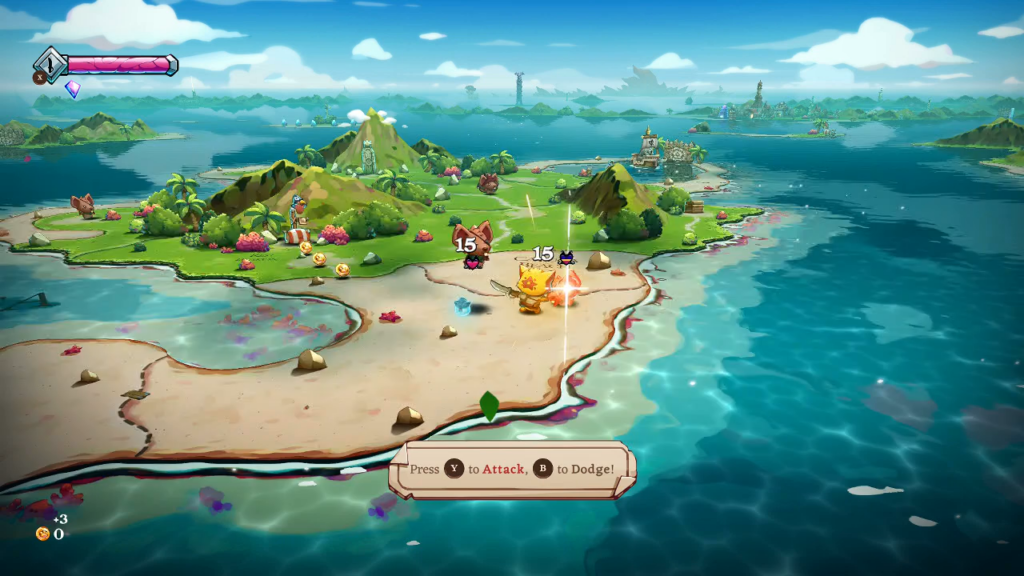
The Seeker may also equip a firearm. Flintlock pistols and blunderbusses feel appropriate in the pirate setting. An automatic machine gun is more of a stretch but is in keeping with the series’ whimsical approach. When all of a firearm’s bullets are expended, its magazine slowly and automatically replenishes, encouraging the Seeker to switch to melee attacks for a short time. The reloading period makes sense as a precaution against the Seeker relying exclusively on their firearms. This sensible addition is undermined by magic wands which may be fired repeatedly with no reloading period. Since wands also allow the Seeker to blink through enemy attacks instead of dodge rolling, there is little compelling reason to use a regular firearm at all.
Another problem with ranged weapons is how they are accessed. A button press toggles whether the main attack button swings the Seeker’s chosen melee weapon or fires their ranged weapon. Instead of this unnecessary extra step, why not have one button attack with the melee weapon and the other button fire the ranged weapon? Several times during my time with Cat Quest III, I press the attack button assuming the Seeker will fire their wand only to have them swing their sword instead. Though ranged weapons are functional and frequently useful, obvious considerations about balance and implementation seem to have not been made in the development process.
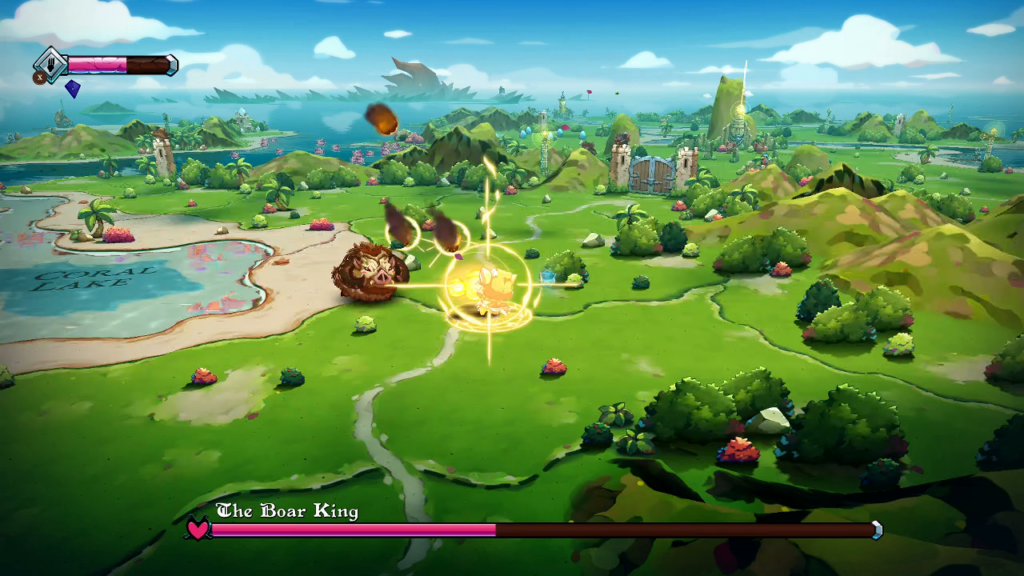
The Seeker may also choose from ten different magic spells. Some are utility spells that heal the Seeker, enhance the damage they deal, or reduce the damage they take. Most are straightforward damage spells that affect different areas around the Seeker. Direct damage is useful but their secondary effects have a much greater impact on the flow of combat. Ice spells slow down enemy movement and attacks, making them easier to dodge. Lightning spells stun enemies, precluding the need to dodge at all. Fire spells are the most useful. They set enemies aflame, dealing further damage for several more seconds and adding additional damage to attacks from the Seeker’s conventional weapons. Enemies don’t get a chance to attack at all when they are vanquished in an instant from a fire spell and a few hits from a sword.
Cat Quest III encourages the Seeker to frequently use magic. Mana, the resource that powers their spells, is replenished with every blow they land on an enemy. They don’t even have to make careful choices on what spells to use. Unlike the limited melee and ranged weapon slots, the Seeker may equip up to four spells at once, almost half the total available. It takes several hours of play before they even have to decide which spell they won’t use. Other RPGs encourage conservative play for their spellcasters. Cat Quest III rewards aggressive, even reckless play with additional chances to cast many spells.
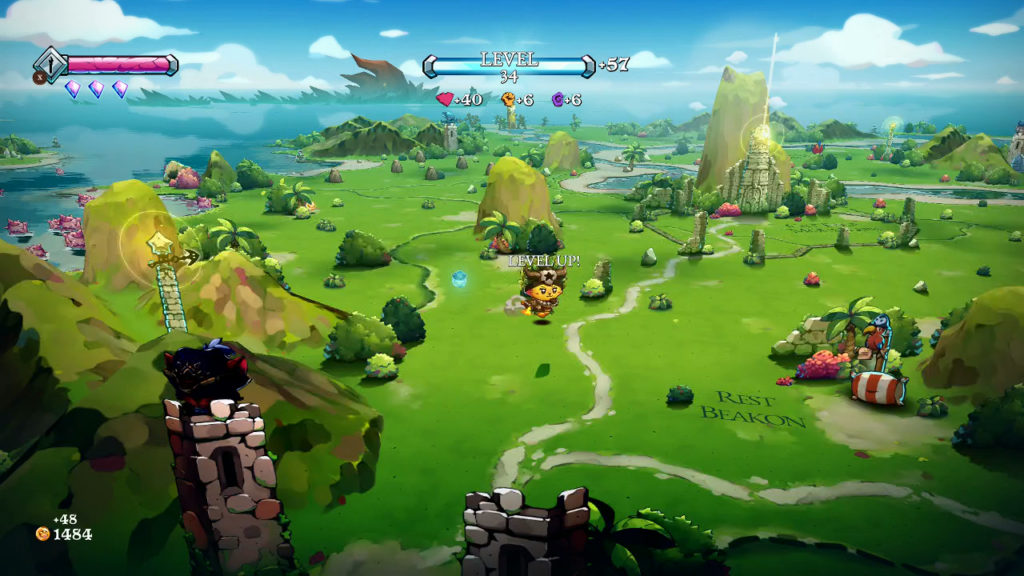
Though Cat Quest III is an RPG, it is a rudimentary one. When the Seeker gets enough experience points from defeated enemies to level up, all of their stats rise together. I make no choices about how they will develop as a player character.
The Seeker’s particular skillset is instead emphasized by the hat and armor they wear. Each equipment piece provides a powerful boost to a particular playstyle, encouraging the Seeker to dress for the job they want. For a defensive powerhouse, they wear the Knight Hat and Armor, which collectively grant a ten percent boost to their defense. The Purrivateer Hat and Vest provide extra ammunition to ranged weapons. For a magically-focused Seeker, there are Mage sets available for all schools of magic: fire, ice, lightning, and arcane.
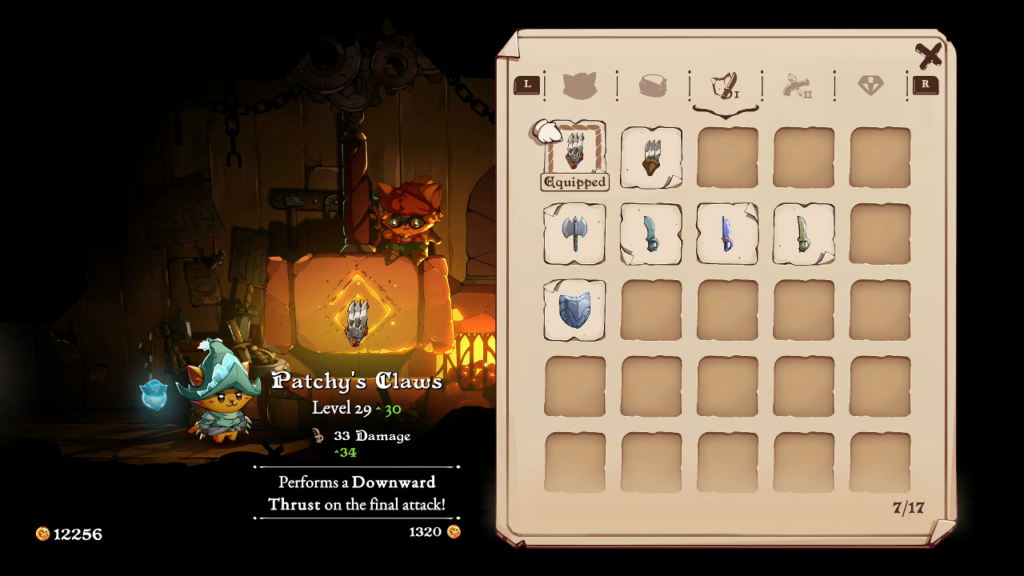
In an attempt to keep even the earliest equipment relevant all the way to the endgame, Cat Quest III includes a clever bilateral upgrading system. The Seeker discovers gold coins across the Purribean for completing nearly any action. These gold coins may be exchanged for equipment upgrades at the blacksmith in Pawt Purvanna, a hub near the map’s center. Equipment also upgrades without a monetary cost and at a much more dramatic rate when the Seeker discovers a duplicate in a chest or dropped by an enemy.
Gaining equipment levels from duplicate items is a good idea in theory. I shouldn’t feel like I’m wasting my time exploring low level areas and old quests if I can be sure I’ll get a powerful reward from it. The problem is there really isn’t much opportunity for the Seeker to discover many duplicate items. The Purribean hides only 162 chests in total within its borders—that sounds like a lot, but when multiple chests are found on each island and in each dungeon, the number quickly dwindles. When these few chests are divided between dozens of armor pieces, weapons, and various other collectibles, it does not create many opportunities to obtain duplicates. The system works better when it is paired up with grinding drops from easily killed monsters, a practice I detest and will always look down on a videogame for encouraging.
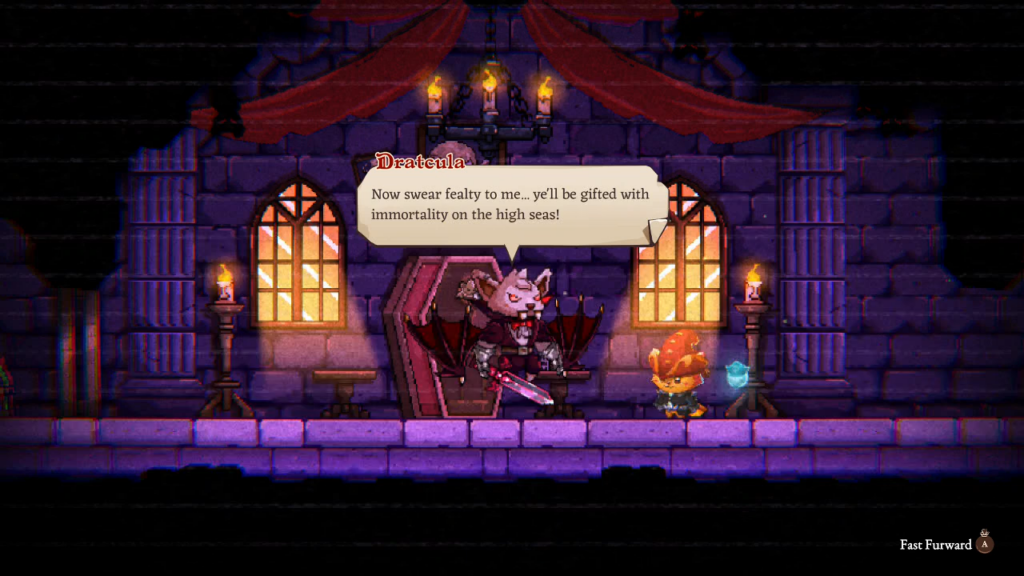
Some of the rarer equipment sets are so much better than the common ones that it’s comical. The Purrmaid set provides astronomical boosts to the Seeker’s health and strength, even at much lower levels than other equipment that boosts identical stats. Dratcula’s Suit adds a life steal per hit effect so potent that, coupled with a fire spell’s increased damage debuff, the Seeker becomes practically invincible for as long as they can keep attacking. The argument may be that these are top-level sets rewarded for completing the Purribean’s most elusive quests. Yet the quests aren’t that hard to find or complete. Ignoring these armor sets feels foolish. As with the functionality of the ranged weapons, I sense a lack of refinement and balance with the armor available to the Seeker.
Not all of Cat Quest III’s combat is performed by the Seeker on land. One of their first tasks is to steal a ship from two Pi-Rat flunkies. This vessel becomes the Seeker’s primary source of transport around the Purribean and is also used in ship-to-ship naval combat.
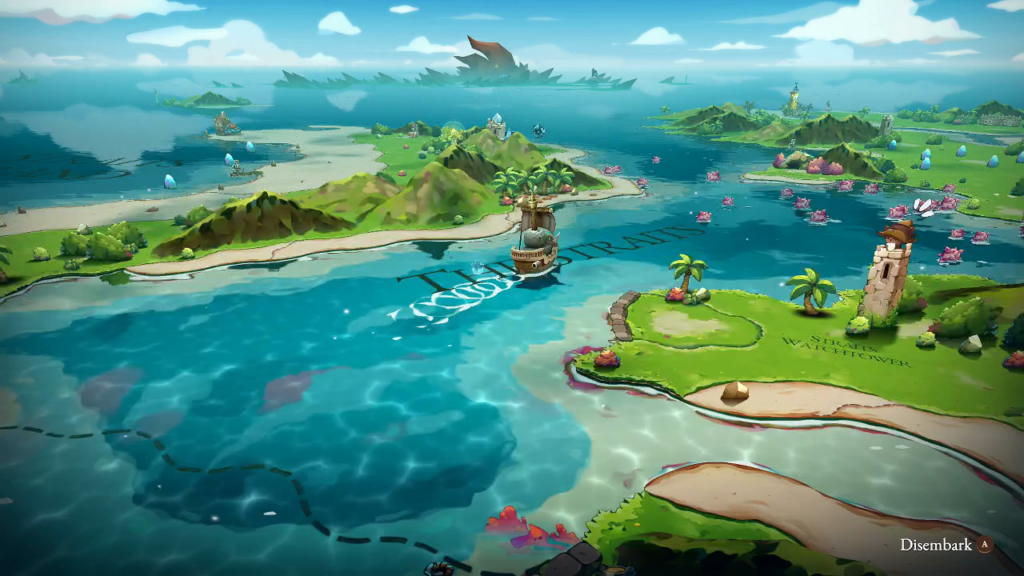
The on-foot combat is simple and elegant. The naval combat is blunt and crude. The Seeker’s ship is equipped with a single cannon that can only fire directly in front of it. Most ships in the Purribean take several hits before they sink. The obvious solution is to park in front of a target and spam the attack button, but this leaves the ship vulnerable to return fire. These fundamental concepts turn naval combat into frustratingly repetitive affairs where I steer the ship in loops near an enemy, blasting away when it faces its target, then circling away before it can be hit by return fire.
If the ship runs out of health, it is not an automatic game over. Instead, the Seeker is dropped into the water in a lifebuoy, unable to do anything besides paddle slowly to safety. If they can remain within a small circle surrounding the ship, it will slowly repair itself back to full health, whereupon the Seeker may jump back inside and resume combat. The scuttled ship will absorb attacks, so many ship battles—particularly those against the most powerful ships in the Purribean, though these are thankfully optional—become protracted affairs where the Seeker assaults an enemy with superior toughness until their own ship breaks, hides behind its wreckage while its repair meter fills, and then resumes their assault, repeating for however many times it takes to destroy the enemy ship.
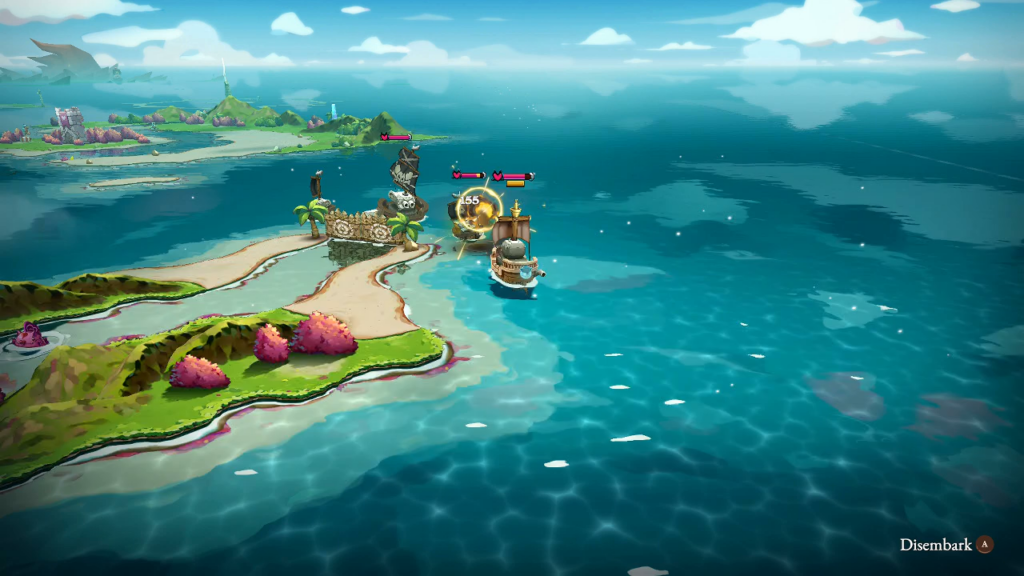
It’s an effective strategy. It’s also a dull and repetitive one that the Seeker feels forced into using. There are upgrades discovered through the Purribean which may be equipped to the ship. They do little to change the basic attack strategy.
The Seeker’s search for the North Star is facilitated by a traditional quest system. Their first task is to gather an artifact called a Star Rune from an obelisk. This magical item causes towers around the Purribean to point incessantly towards the next location that will unseal the path to the North Star. It’s a neat idea that keeps the interface clean. There are no markers on the perimeter of the screen constantly urging the Seeker to the next plot point. I do not have to constantly consult the map to see where the next quest objective is, though that is still an option if I prefer insistent waypoints to the organic methods Cat Quest III uses to keep me on track. The towers make it seem like the Purribean itself is guiding the Seeker to their destination.
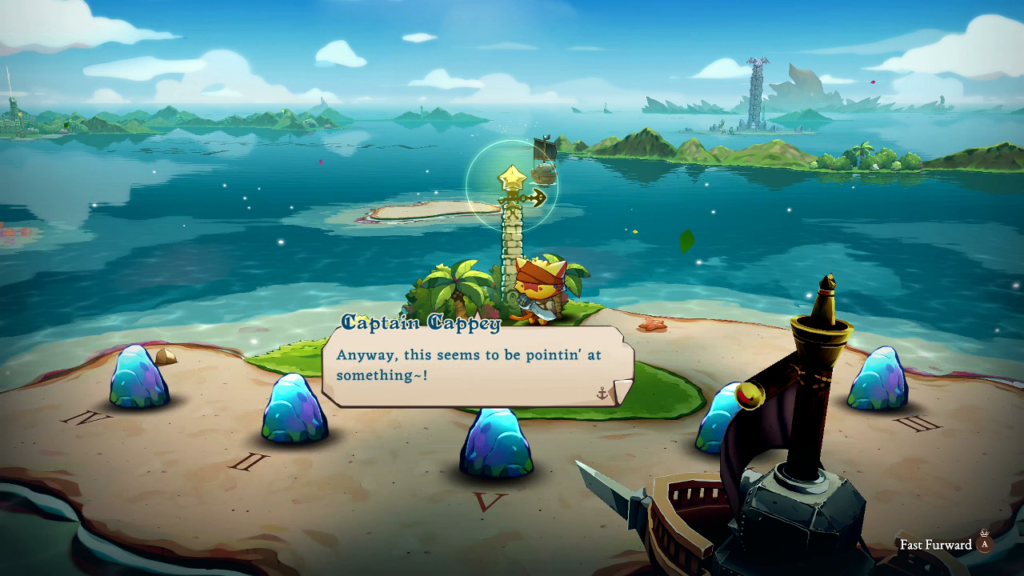
I am still distracted from the Seeker’s search for the North Star by the many other sidequests that appear throughout the Purribean. A heartbroken dandy seeks lost romance novels which tell a familiar story. A grumpy fishercat sends the Seeker away to catch four rare fish, seemingly just to get rid of them, but this snipe hunt results in an emotional revelation. A postmutt needs the Seeker’s help to deliver a letter, whose receiver also needs a letter delivered, and the next, and so on for quite some time.
In contrast to the first two Cat Quest videogames, Cat Quest III’s sidequests strive for a quality-over-quantity approach. Most take the Seeker all across the Purribean and it is sometimes many hours before they reach a high enough level to venture into the dangerous territory where a sidequest’s next step requires them to go.
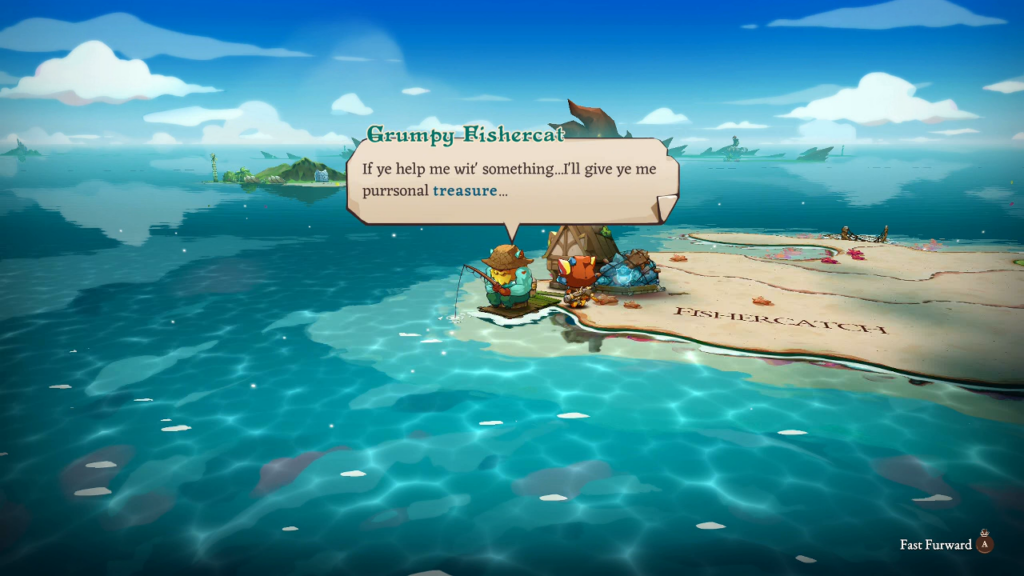
It is through these sidequests that most of Cat Quest III’s dungeons are accessed. The dungeons the Seeker explores are dark and cramped. Many of them are made moreso by the interesting decision to move into a side-scrolling perspective, transforming many dungeons into pseudo-two dimensional affairs.
Cat Quest’s combat is built around freedom of movement. The player character’s ability to move in every possible direction is vital for avoiding enemy attacks and approaching them again from an advantageous angle. Making so many of the dungeons two dimensional undermines this fundamental aspect of the combat design, especially since the Seeker is not compensated for losing so many avenues of movement with the power to jump.
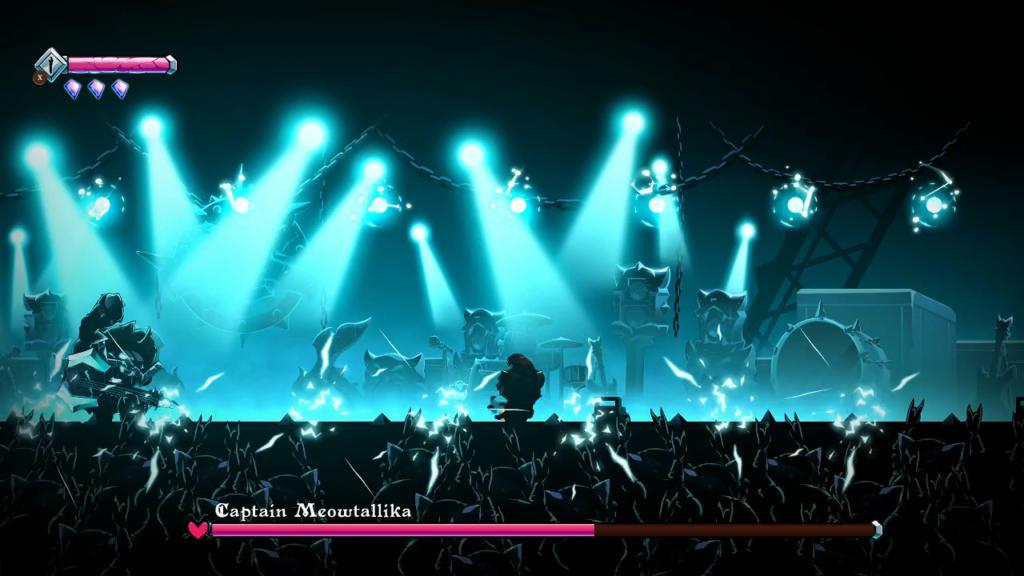
When out in the world, the Seeker can move in any direction they want. In a plurality, if not a majority of the dungeons, they can only move forward and away. A few encounters are designed with this limitation in mind, most notably a boss fight against Meowtallika, a metal guitarist pirate cat with electric powers. Most encounters are not, forcing the Seeker to run headlong into danger because there is literally no other choice. It’s a baffling upheaval of the series’ traditional combat mechanics and another place where Cat Quest III’s design decisions seem to have been made with little thought for their outcomes.
The Cat Quest series has never had deep narratives and Cat Quest III does not break that trend. At first it seems like the Pi-Rat King will be a memorable foe. Despite his menacing first impression, he has little actual presence in the narrative. He appears one step ahead of the Seeker at every milestone of their journey, yet he is always unable to open the doors leading to the next macguffin. He stomps around for a moment, grumbles, then leaves, letting the Seeker slip by to claim the next key leading to the North Star. The Pi-Rat King ultimately retreats to his hideout, waiting for the Seeker to arrive at the door to the North Star’s treasure before making his move. The Seeker can even pre-emptively go and fight him before the narrative’s climax as a sidequest. The Pi-Rat King stops being menacing and starts feeling buffoonish, feckless, and pathetic, little different than his henchrats, Squeaky and Clean.
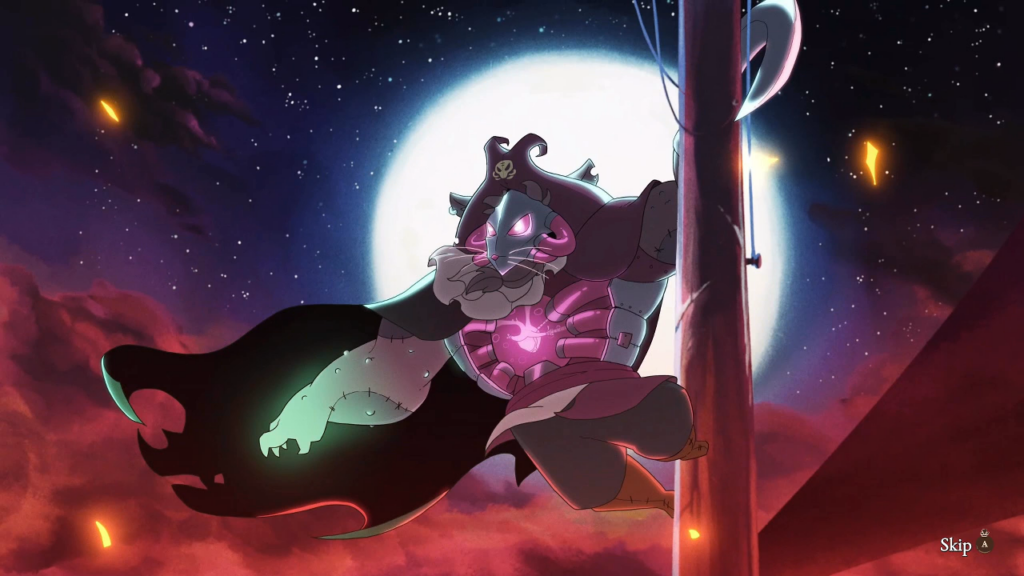
Though the Pi-Rat King is initially cast as the Seeker’s primary antagonist, he is ultimately a side character in the conflict. The plot’s real antagonists—if you can call them that—and the driving force which spurs the Seeker on their journey are familiar and unwelcome sights.
In my reviews of previous Cat Quest installments, I have been critical of an ongoing subplot that explains the origins of this world filled with anthropomorphized cats (and dogs and rats). I have never felt like I needed this explained to me and none of the elaborations in Cat Quest II or III have changed my mind.
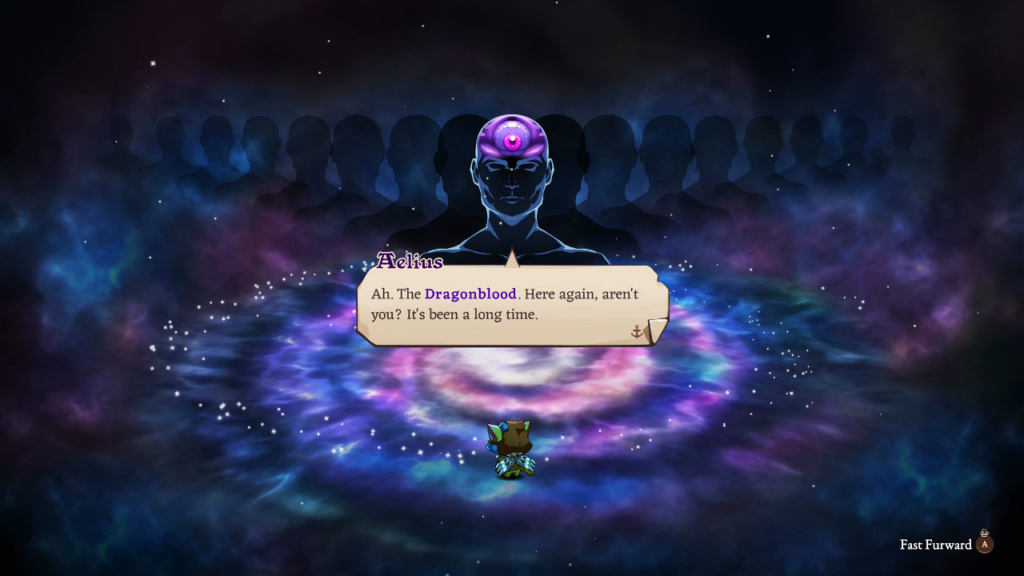
These figures recur in Cat Quest III’s narrative with a renewed prominence. The Pi-Rat King kicks off the plot, but the shadowy figures step in to take over at the climax, with an indecisive result. Nobody gains much from this story. The Seeker is still an anonymous pirate. Captain Cappey is still an incorporeal spirit. The Pi-Rat King is still trapped in his broken body. The only ones who benefit are the mysterious figures.
The main problem with this narrative is its conclusion ultimately reveals that it is setting up future narratives. Cat Quest III is not permitted to be its own videogame. It is a sort of prologue to a story which will be resumed in subsequent videogames—nine in total, including the three current installments, if the developer’s plans reach fruition. The Seeker’s quest for the North Star is nothing more than being a courier for a macguffin the figures need to jumpstart the Apawcalypse. The story ends on a deliberately inconclusive note that leaves me feeling unsatisfied and unrewarded.
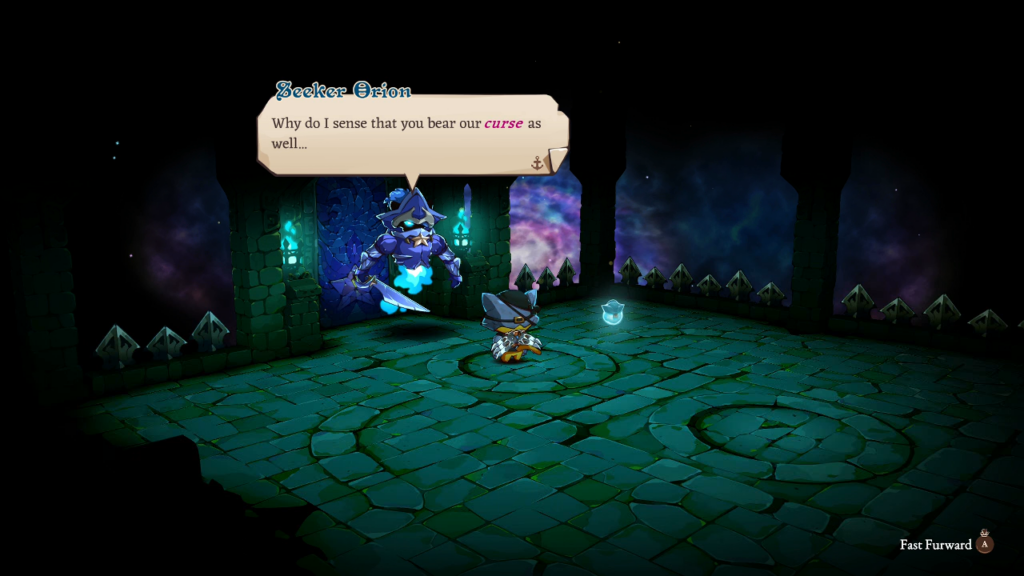
Cat Quest III leaves me desiring more. I can see parts here of a bigger, beautiful expansion to the first Cat Quest, a videogame I love. The graphics are more vibrant, the animations are more detailed, the camera is closer to the player character and captures them at a more extreme angle, granting a new level of visual dynamism to the familiar presentation. Despite this pleasing first impression, my remaining time with Cat Quest III is submerged in disappointment. New layers are added to the combat. They feel unrefined and have little impact on how I play. Quests are longer and better written. They are fewer in number and less rewarding. Dungeons are given a new perspective. It clashes with the fundamental design upon which the series has thrived. The story persists in expanding on its worst elements and ends without anything really happening. I’m still waiting for a truly worthy successor to the original Cat Quest. This is not it.